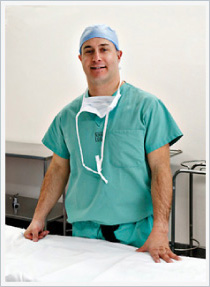Total Hip Replacement: Innovative Procedure Reduces Pain, Speeds Recovery; Orthopaedic Surgeon Erik N. Zeegen, M.D. Explains Minimally Invasive Anterior Approach
Los Angeles, CA (PRWEB) December 13, 2013 -- The demographics – and the numbers – for hip replacement surgery are changing. According to the American Academy of Orthopaedic Surgeons, between 200,000 and 300,000 total hip replacements are performed in the United States each year, the majority of them on people over the age of 60. But the number of total hip replacements performed on younger people is increasing and it is estimated that the total number will grow dramatically over the next few years. “The development of longer lasting prostheses and advances in surgical techniques are driving younger people to avoid postponing the procedure,” says hip replacement specialist Erik N. Zeegen, M.D. One of the most important surgical advances is the anterior hip replacement, a minimally invasive procedure that reduces pain and speeds rehabilitation. Realizing that hip replacement can be less disruptive to their lives than in the past, many people suffering from arthritis and degenerative disorders are choosing not to endure years of discomfort and restricted activity and are opting for surgery at younger ages and in increasing numbers.
Conventional v. anterior hip replacement
In conventional hip replacement procedures, the surgeon accesses the hip joint from the lateral (side) or posterior (rear) position and must detach muscles from the femur or pelvis to expose the hip. In anterior hip replacement, the hip is approached from the front and the most important muscles for hip function are undisturbed. “By accessing the hip joint from the front the surgeon can work through a natural plane in between the muscles,” says Dr. Zeegen. “Leaving the muscles intact reduces trauma to the hip area and dramatically improves recovery and rehabilitation for the patient.”
The innovation that has made anterior hip replacement feasible is a specialized operating table that allows a range of motion and control not possible with a conventional operating table. “The table is essentially an infinitely adjustable positioning device,” says Dr. Zeegen. “It allows hyperextension and rotation of the hip to an extent not possible otherwise and gives us access to the hip socket with a much smaller incision and without detaching muscle from bone.” The table also facilitates taking x-rays during surgery to ensure precise positioning, sizing and fit of the artificial hip components. Because of the smaller incision and because no muscles are cut or detached during surgery, the patient experiences less blood loss, less pain and less scarring.
Faster recovery, shorter hospital stays
Anterior hip replacement surgery typically reduces the hospital stay to 2-3 days but even more dramatic improvements in recovery time are seen after the patient leaves the hospital. The faster recovery enables patients to get back to work quicker which is certainly a key advantage of this approach.
Conventional hip replacement imposes strict post-surgical precautions such as limiting hip motion for as long as 6-8 weeks and avoiding flexing the hip more than 60 to 90 degrees. These constraints make daily activities like sitting, bending and walking up stairs difficult. After anterior hip replacement, patients can bend the hip right after surgery and are instructed to use the hip normally. They can bear their full weight as soon as they can do so comfortably, which enables quicker return to normal function. “It's gratifying to see many patients at their first office visit two weeks after discharge walking with only a cane or even unassisted,” says Dr. Zeegen.
Most patients who are candidates for traditional hip replacement are also candidates for the anterior procedure. Exceptions include those who are undergoing revision of a previous surgery and those with certain deformities of the hip. For patients who require bilateral hip replacement, the anterior approach often makes it possible to do both hips at the same time, so the patient needs just one hospitalization, one surgical procedure and one rehabilitation.
“The pain caused by wear and tear of the hip bones can be debilitating. With the development of prostheses that can be expected to last many years and with new surgical techniques like anterior hip replacement that are less disruptive to patients' lives, we're seeing more people opt for replacement surgery sooner rather than later,” Dr. Zeegen concludes. “The anterior procedure offers people of all ages a way to resume their normal activities quickly and enjoy an improved quality of life for many years to come.”
Erik N. Zeegen, M.D., a board-certified orthopaedic surgeon, is one of Southern California’s leading joint replacement surgeons. His practice is focused on hip and knee replacement surgery, including revising hip and knee replacements that have failed. http://www.socaljointreplacement.com/
Melissa Chefec, MCPR, LLC: PR for Doctors, http://www.mcprpublicrelations.com, +1 (203) 968-6625, [email protected]

Share this article